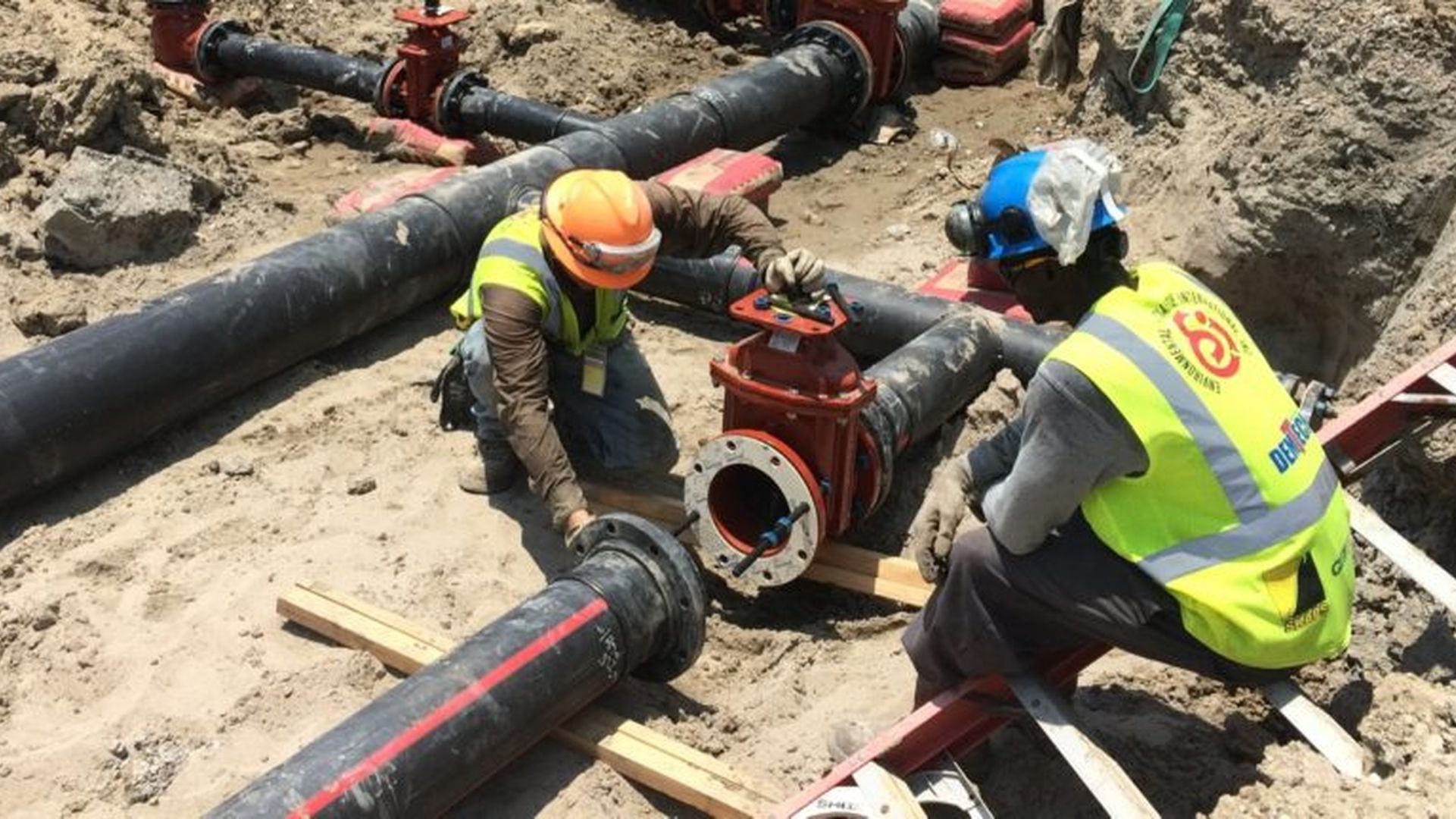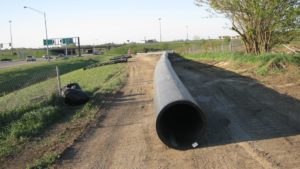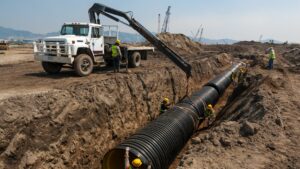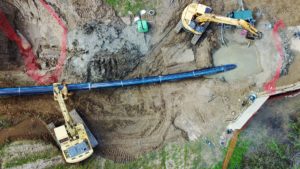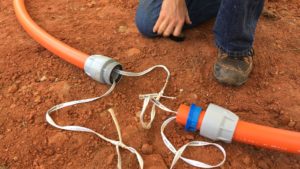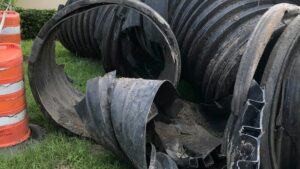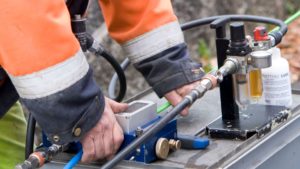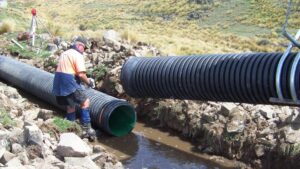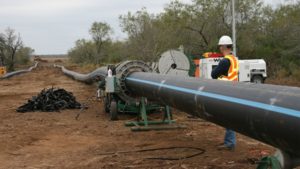Traditional piping systems have gasket-sealed bell and spigot joints every 20 feet, which can be a potential maintenance and repair point at each connection. Metallic pipes are subject to corrosion which can require constant maintenance over the life of the pipes.
A heat fused high density polyethylene (PE) pipeline is not only corrosion and chemical resistant but the leak free joints at 40 to 50 foot intervals are as strong as the pipe itself which provides a maintenance free system except for infrequent unforeseen third party damage.
If PE is damaged by a third party, repair methods may be required to bring the piping system back into service as soon as possible. This article will provide general guidelines for repairing PE. For above ground repairs, when the pipe can be moved, the damage can be cut out and replacement pipe can be butt fused or electrofused into the system.
However constrained installations, such as buried pipes, may not allow such movement. Permanent repairs of constrained pipes may require techniques and fittings that do not require longitudinal movement such as spool or flanged assemblies, mechanical or electrofusion couplings, etc.
Caution: Be sure to follow OSHA safety guidelines when uncovering and repairing buried pipelines.
Natural Gas Polyethylene Piping Systems
In this application, only those persons qualified pursuant to a gas company’s Operator Qualification program shall make repairs. Plastic piping systems may be damaged during installation or through third party damage by others once in service. The repair or replacement must be made in accordance with requirements of DOT 49 CFR 192.311.
All imperfections or damaged sites that would impair the serviceability of the plastic pipe (significant scratches, gouges or flaws) must be removed or repaired. Mechanical or electrofusion couplings appropriate for plastic gas piping systems are frequently used for economical and convenient replacement of damaged plastic pipe segments.
The gas flow is stopped; the damaged section cut out and replaced with a mechanical repair fitting or a new segment using either two couplings or a fusion joint and a coupling. Joints fabricated from mechanical fittings used in replacement must be designed to restrain the pipe against pullout forces and, if metallic fittings are utilized, be protected against corrosion.
Full encirclement type band clamps have been successfully used with plastic pipe to make repairs. ASTM F 1025 “Standard Guide for Selection and Use of Full Encirclement Type band clamps for Reinforcement or Repairs of Punctures or Holes in Polyethylene Gas Pressure Pipe” provides guidance regarding use of this fitting for repair and reinforcement of polyethylene pipe.
The important consideration is that the clamp permanently exerts limited unit-bearing pressure on the plastic pipe since it is not possible to install metal stiffeners inside the plastic pipe in this application. A soft gasket formulation with waffle-type inner surface would generally be preferred for this application.
In all cases, the method used should follow procedures that have been established and qualified by test. Full encirclement type band clamps in compliance with the guidelines of ASTM F 1025 are acceptable for temporary repairs of polyethylene pipe.
Before placing in service, test segments of plastic pipe that are installed to replace damaged sections of mains and services according to the operator’s procedures. Leak test all tie-in joints and the squeeze-off areas at system pressure after the repair is complete. If recommended by the manufacturer, any anti-static fluid should be rinsed from the piping using water.
If, in a dig-in situation or a plastic service other than a low pressure service, it appears that the pipe or casing was pulled or moved, and that damage could have occurred at locations along the service other than those inspected or repaired, leak-test the entire service at 100 psig for a minimum of 5 minutes per the operator’s procedures.
Leak- test low –pressure services at 10 psig for a minimum of 5 minutes per the operator’s procedures. If additional damage is found, replace the service. Read Full PDF

